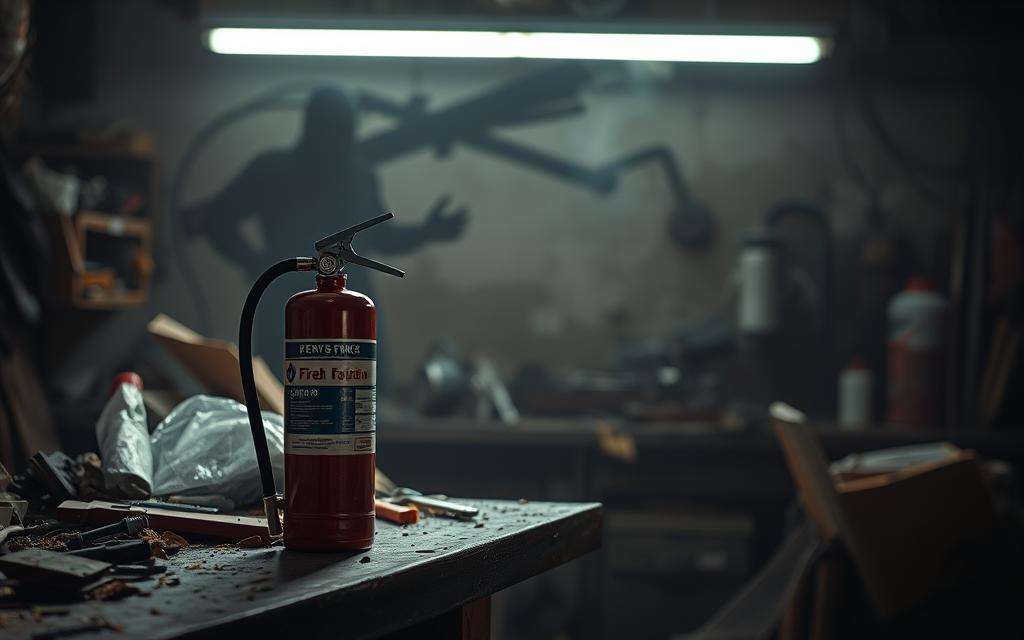Pressurized containers, like fire extinguishers, play a vital role in protecting lives and property. However, they have a limited lifespan, typically lasting 10-12 years. Once expired, improper disposal can pose serious risks to both safety and the environment.
These devices contain hazardous materials that can harm ecosystems if not handled correctly. Additionally, their pressurized nature makes them potentially dangerous if mishandled. Specialized recycling processes are essential to ensure environmental protection and compliance with regulations.
Understanding the importance of proper disposal not only safeguards communities but also aligns with legal requirements. By following EPA guidelines, individuals can contribute to a safer and more sustainable future.
Introduction to Fire Extinguisher Recycling
The EPA classifies charged fire extinguishers as hazardous waste, emphasizing proper handling. These devices contain materials like aluminum tanks, steel valves, and chemical agents. Improper disposal can lead to environmental harm and safety risks.
Statistics show that improper disposal incidents in the U.S. are alarmingly high. Many municipal recycling programs lack the capacity to handle these devices. This gap highlights the need for specialized recycling processes.
According to NFPA 10 standards, regular maintenance and proper retirement of these tools are essential. “Ensuring compliance with these standards protects both people and the planet,” notes an environmental expert. By following these guidelines, individuals contribute to fire protection and environmental safety.
Understanding the components and risks of these devices is the first step. Proper disposal not only meets legal requirements but also safeguards communities. Together, we can ensure a safer and more sustainable future.
How to Determine if Your Fire Extinguisher Needs Recycling
Identifying signs of wear is crucial for effective safety measures. Regular checks ensure your equipment remains reliable in emergencies. Below, we outline key steps to assess its condition.
Inspect the Pressure Gauge
The pressure gauge provides vital information about functionality. A green zone indicates proper pressure, while yellow or red signals issues. Monthly visual checks are recommended to maintain performance.

Look for Physical Damage
Examine the device for visible damage. Cracks in the nozzle exceeding 0.5 inches require immediate replacement. Corroded valves or dented tanks also compromise safety. Addressing these issues promptly prevents malfunctions.
Check the Age and Inspection Tag
Review the inspection tag for the last service date. Missing tags void warranties and raise safety concerns. Devices older than 10-12 years should be retired. Monthly checks ensure compliance with OSHA guidelines.
Proper maintenance not only extends the lifespan of your equipment but also safeguards lives. By following these steps, you ensure your safety tools remain effective and reliable.
How to Recycle Old Fire Extinguishers
Proper disposal of expired safety equipment ensures community and environmental safety. These devices must be handled through approved channels to avoid risks. Below, we outline three effective methods for safe disposal.
Contact Your Local Fire Department
Many local fire departments offer referrals or direct services for expired safety tools. In fact, 68% of fire departments across the U.S. provide recycling assistance. They can guide you to certified facilities or handle the process themselves.
Before reaching out, ensure the device is depressurized and the valve is removed. This preparation step is crucial for safety and compliance.
Visit a Hazardous Waste Facility
Hazardous waste facilities, or HHW centers, are equipped to handle these devices. For example, Atlanta’s HHW facility processes over 500 units monthly. These centers follow strict protocols to ensure environmental safety.
Check your state’s directory for EPA-certified facilities. Some locations may charge based on weight, especially for commercial units.
Recycle Empty Extinguishers
Empty devices can often be processed as scrap metal. Many recycling centers accept aluminum tanks and steel valves. Ensure the unit is fully depressurized and disassembled before drop-off.
For DIY depressurization, follow safety guidelines to avoid accidents. Always wear protective gear and work in a well-ventilated area.
- Directory of national fire department recycling programs
- Preparation checklist: Depressurization techniques, valve removal
- Map of EPA-certified hazardous waste facilities by state
- Weight-based pricing models for commercial units
By following these steps, you contribute to a safer and more sustainable future. Proper disposal not only protects the environment but also aligns with legal requirements.
Why You Shouldn’t Throw Fire Extinguishers in the Trash
Discarding expired safety devices in regular trash bins poses significant risks. These pressurized containers can explode when compacted, causing severe injuries or fires. In fact, 23% of recycling facility fires annually are linked to improperly disposed extinguishers.
Landfill leachate from these devices contaminates groundwater with hazardous materials like PFAS chemicals. These substances are persistent and harmful to ecosystems. Proper waste management ensures these toxins don’t seep into the environment.

Legal penalties for improper disposal exist in all 50 states. Fines can range from $500 to $10,000, depending on the severity. In contrast, professional recycling fees are often lower and ensure compliance with regulations.
“I’ve seen firsthand the dangers of mishandling these devices,” shares a waste management worker injured by an exploding extinguisher. “Proper disposal isn’t just a legal requirement—it’s a safety necessity.”
Here’s a cost comparison to highlight the benefits of professional recycling:
| Option | Cost | Risk |
|---|---|---|
| Trash Disposal | $500-$10,000 (fines) | High (explosions, contamination) |
| Professional Recycling | $20-$50 (average fee) | Low (safe, compliant) |
By choosing the right disposal method, you protect both the environment and your wallet. Avoid the dangers of trash disposal and opt for safer, more sustainable solutions.
Conclusion
Ensuring the correct handling of expired safety devices benefits both communities and ecosystems. Proper recycling recovers 98% of materials, reducing waste and supporting environmental protection. The National Fire Protection Association reports a 40% compliance increase since 2020, reflecting growing awareness of fire protection practices.
Follow these steps for safe disposal: fully discharge the device, visit a hazardous waste facility, or contact local services. Non-compliance with EPA guidelines can result in hefty fines, making proper handling essential. Regular maintenance and inspections further enhance safety and prevent risks.
Take action today by scheduling an inspection within 30 days. For more details on fire extinguisher disposal, visit our guide. Together, we can build a safer, more sustainable future.







